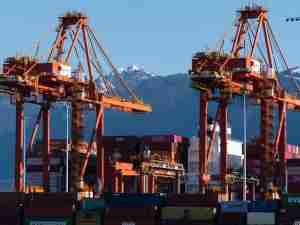China’s exports unexpectedly jumped as global demand remained firm, while import growth in the world’s second-largest economy continued to outpace sales abroad.
Key Points
- Exports rose 12.3 percent in November, the customs administration said Friday
- That compares with a forecast of 5.3 percent in a Bloomberg survey
- Imports climbed 17.7 percent, leaving a trade surplus of $40.2 billion
Big Picture
Demand for Chinese products has proven robust as growth in major trade partners remains intact, and imports are stabilizing as the domestic economy has outperformed this year. The official factory gauge unexpectedly rose to near a five-year high in November, despite campaigns to clean up the environment and the financial system. Policy makers recently announced tariff cuts to help boost imports as China evolves to a more consumption-driven basis.
Still, the world’s largest exporter faces uncertainty. Trade frictions between the two biggest economies still appear to be on the horizon after the Trump administration recently argued that China is backtracking on the market principles that form the norm in globalized trade.
Economist Takeaways
“The robust global economy—both the developed and developing economies—has lifted China’s exports,” said Yao Shaohua, an economist at ABCI Securities Co. in Hong Kong. “China’s investment growth will slow slightly next year, weighing on imports growth.”
“Imports are stable this year thanks to domestic recovery, and also rising commodity prices,” said Liu Xuezhi, an analyst at Bank of Communications Co. in Shanghai. “Better export performance has driven up imports too.”
Import growth has outpaced exports for more than a year and this will persist as domestic demand for commodities continues unabated, Moody’s Analytics economists wrote in a recent note. Exports are growing amid a global tech boom ahead of the holiday season, they said.
The Details
- Crude oil imports in January-November rose 12 percent from the same period last year








